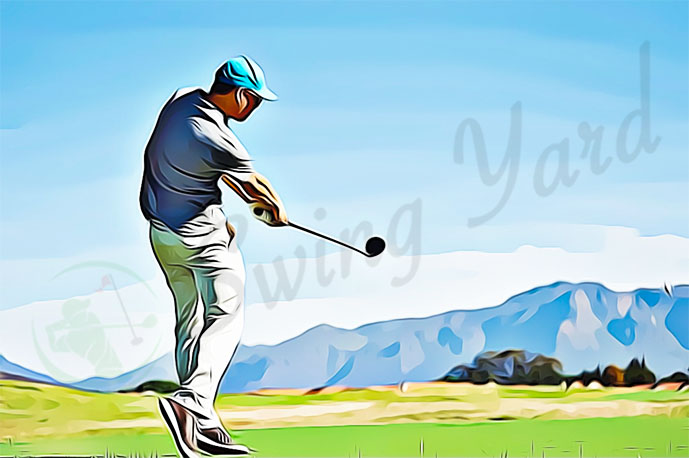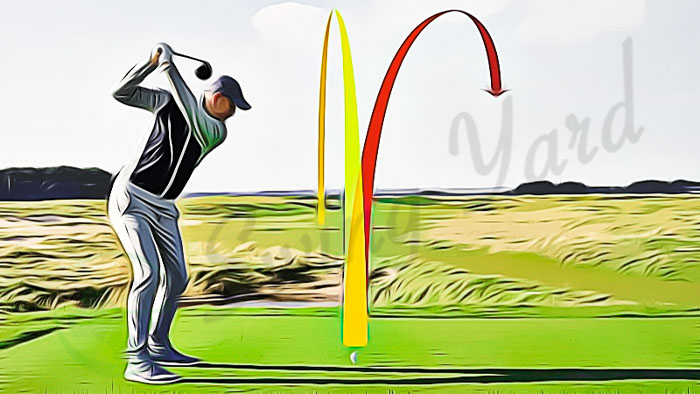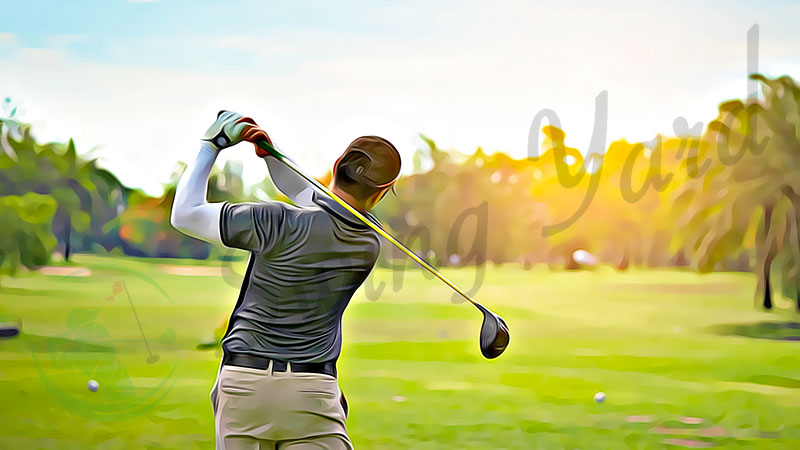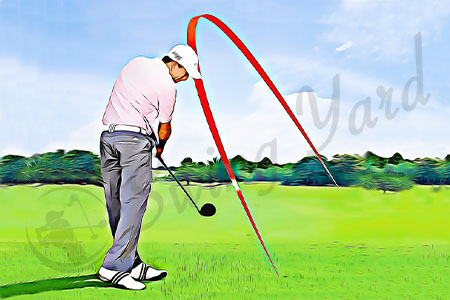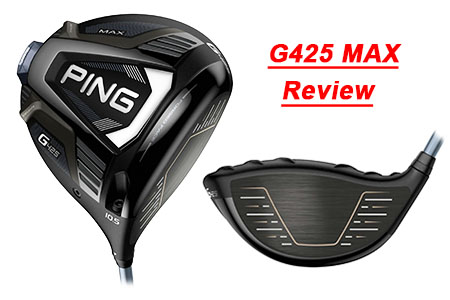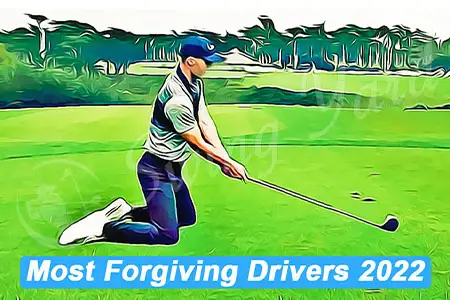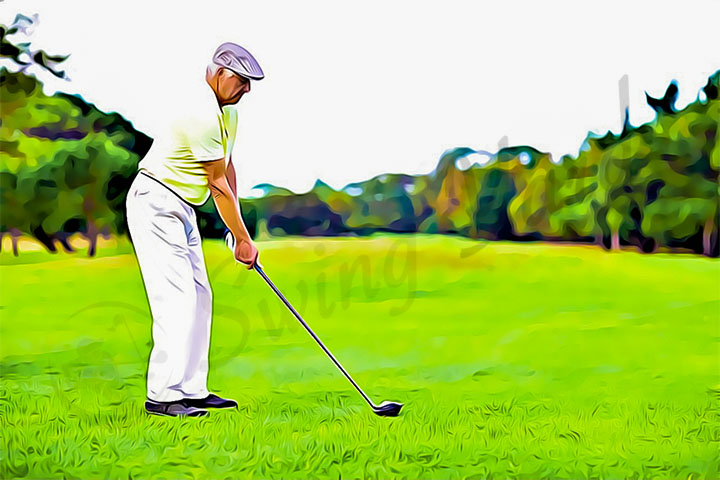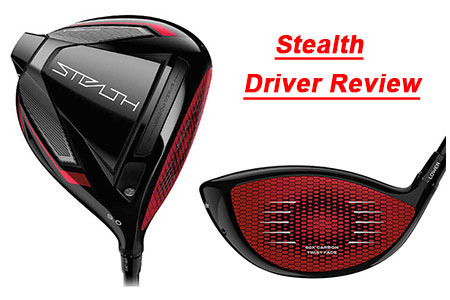How to Hit a Driver: It’s EASY as long as you don’t…
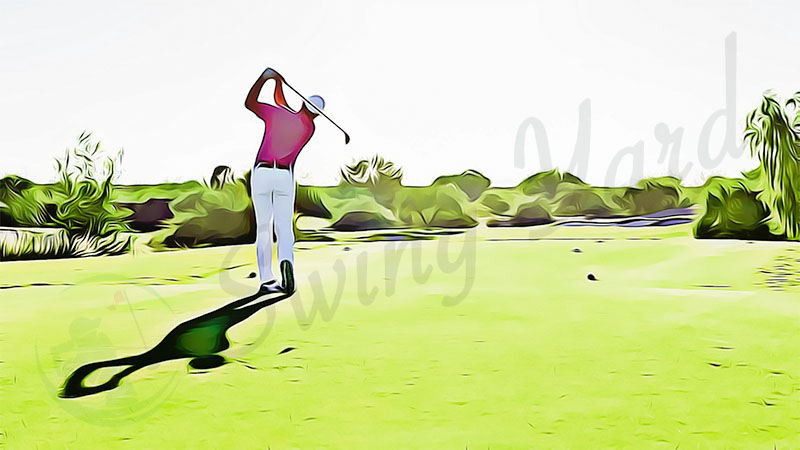
By Coach Erik Schjolberg – Jan 10, 2024
Contents
Key Takeaways
- Driver is the ONLY club you should hit UP on
- Widen your stance compared to irons
- Tee it up higher to help hit up on the ball
- Ball position should be closer to lead foot
- Shoulder tilt towards back foot
- Proper weight shift on downswing is key!
- Too fast is too unpredictable
- Develop a stock fairway finding shot
Lots of new golfers, and many not so new ones as well, struggle hitting the almighty driver!
Sometimes it’s too far left… usually it’s too far right… but rarely straight down the middle of the fairway.
This has been the case ever since the modern game of golf was created in the 1700’s.
But why is that? Why is the driver SOOOO hard to control?
If you’re someone who has/is struggling with how to hit the driver accurately, this is the article for you.
- WHY the driver is harder to hit
- The setup changes you NEED to incorporate to have success
- How to hit your driver further
- How to increase your driving accuracy
- A few drills you can work on to get some immediate results
- And of course, the most frequently asked questions regarding how to hit a driver
How to Hit a Driver for Beginners – Step by Step Guide
- Tee it higher and hit UP on the ball
- Widen your stance slightly more than normal shoulder width
- Ball positioned forward a few inches from center (towards your front foot)
- Slight shoulder tilt towards rear foot at address
- Weight slightly back on rear foot at address (but transitioning to the front foot as you swing through)
Bonus tip – learn and develop a pre shot routine, including target selection and aiming.
If you’re just starting out and looking to get a new driver, check out our reviews on the best driver for beginners.
Why is it So Hard to Hit Your Driver?
We’re all in agreement that the driver is probably the hardest club to hit in golf. But WHY?
- Length – the driver is easily the longest club in the bag with the standard length of a driver at 45 inches… it’s simply just harder to control the face at impact when that face is further away on a long shaft. Imagine trying to hit a ball with a 10ft long club! You would almost NEVER be able to do it.
- Hitting UP on the ball – you’ve probably heard before that you need to be hitting down on the ball in golf. And that’s usually the case when hitting it off the deck (off the ground, if you’re new here), but it’s the exact opposite when teeing off with a driver. You want to be contacting the ball on the UP part of your golf swing. More on this later. The bottom line is that it’s a different swing, and a different impact position than you’re used to.
- Low Loft – the driver is your least lofted club (other than putter I guess). With less loft, it basically magnifies any error with your club face. The club face is almost completely “flat” compared to your swing path. So any slight error is going to generate more side spin than a club that has more loft. It’s physics.
- Longer distance – since your driver has less loft, it’s going to be sending the ball a much further distance in total. This also amplifies your club face error. If you slice and only hit it 100 yards, it might only go 5-10 yards to the right. If you have the exact same slice with the ball traveling 250 yards, the ball could easily travel 50-100 yards to the right… ending up in the water, trees, whatever.
The Driver Swing: Setup Changes for the Proper Swing
How do you properly swing a driver? The following setup changes are the correct “textbook” way to hit driver:
Tee it up HIGH – How does tee height affect driving distance?
Having the wrong tee height could greatly reduce driving distance.
To hit the ball with the driver correctly, the ball should be teed up high, at least where the equator of the ball is even or slightly higher than the top of the driver clubhead when rested on the ground.
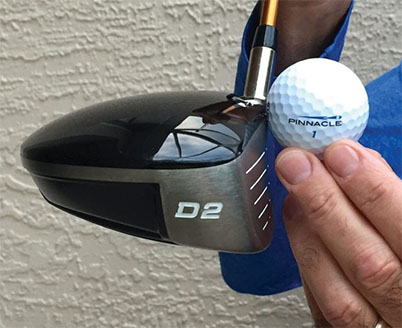

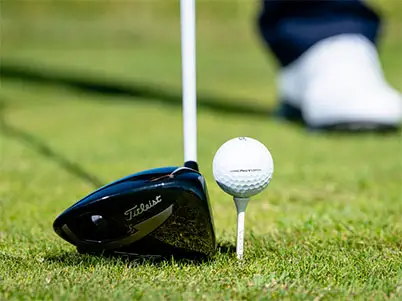

Use tees that are at least 3 ½ inches in length or longer. These longer tees allow for teeing the ball higher. Long Drive Professionals use tees that are almost 5 inches in length. Think about that for a second!
The only time you would want to tee it low would be if you’re trying to hit a low stinger type of shot where a direct headwind or a strong side wind will affect the flight of the golf ball. With light winds, about 10 mph or less, there is a saying… “Tee it high and let it fly”.
Widen your stance – Where should your feet be when hitting a driver?
With the driver, your feet should be wider than with your irons, hybrids, or even your woods by about 6 more inches.
As you address the ball, your feet should be just slightly wider than your shoulders. This wide stance gives the stability needed to swing the long shafted driver.
Ball position for driver – forward in your stance
As it has been throughout the years (decades… centuries?), the driver ball position should be way up on the front heel or as far forward as the front foot big toe.
This goes hand in hand with why it should be teed up high, and the technique of hitting UP on the ball (more on this later, I promise).
Shoulder tilt back and body weight on the rear foot
The best way to hit the driver once you’re at address is to shift your weight slightly to the trail foot, about 55% to 60%, with your shoulders tilted at about 20% to 25% towards the trail foot.
The shoulder till will ensure that you will be swinging up on the golf ball at impact. And with your body weight slightly on the trail foot, this ensures a long, low sweeping backswing.
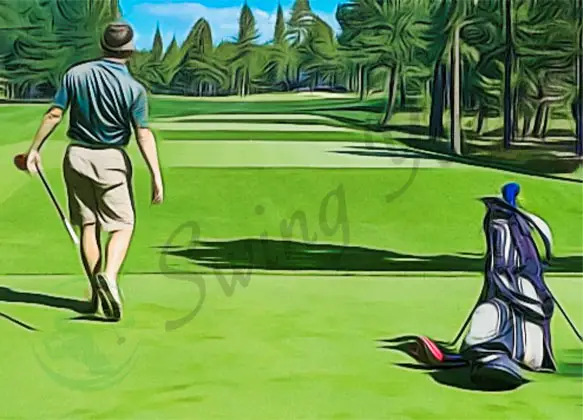

How to Hit Driver Further
To increase your driving distance, try the following adjustments:
Adjust loft
If you have a fast swing speed, 110 mph or higher, you can set the loft of your driver down around 8° or 9°. But if your swing speed is below 100, then it’s best to set the loft to 10°, or maybe even slightly more.
SWALLOW YOUR PRIDE! Trust me on this one buddy.
If your swing speed is much lower than 85 mpg, then the loft on your driver should be 11° or more.
Remember, the higher the ball launches, the longer the ball stays in the air… and therefore, the more yardage you gain on your drives.
We do actually have an entire article on what the correct driver loft should be if you want to give that a read.
I personally have seen amateur golfers who think they need a loft of 8° with swing speeds of 80 or less. In coaching these golfers and raising their lofts to 10 or even higher, they’ve found out that their drives are going much longer.
Even now, some of the PGA Tour Pros are setting their lofts higher than 8°… some are even up around 10.5°. I personally have a swing speed of 97 (I’m a senior), and have my loft set at 11°.
Hit up on the ball
The more you can hit up, or be swinging up, at impact… the higher the launch rate, and thus, the more yardage you get.
So how do you hit up on the ball with your driver?
At address, your driver ball position should be up by your lead heel/big toe, your shaft position should be just inside your lead thigh, your shoulders should be tilted about 20% to 25% down towards your trail side, and your body weight should be slightly on your trail foot.
Your lead foot should be spread out about 20% to 30% to allow your body to pass through the swing. Tilting your shoulder and keeping your head and body behind the ball will ensure you’re swinging up on the ball at impact.
Increase swing speed
Swing speeds make a big difference in how far we hit the ball. The faster the swing speed, the faster the ball speed, and (obviously) the further we can hit the golf ball.
Make Sure You’re Not Hitting it Too High
Another simple fix to gaining more distance is to simply make sure you’re not hitting driver too high. This makes it really hard to get the optimum carry and roll… and ultimately distance.
Hit it in the sweet spot
Of course, no matter how high we launch the ball, how fast our swing speed is, unless we hit the sweet spot (the center of the club face), we won’t get much yardage on the driver… or any other club for that matter.
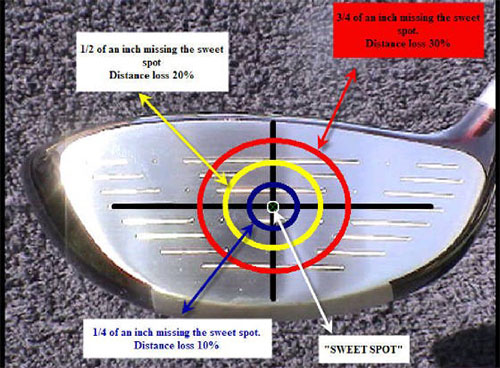

So if you want to get the maximum distance, you must hit the sweet spot on the golf club. More on this in the drills section later, but you MUST practice using drills to find out where on the face you’re contacting the ball, and work to improve it.
Check out the difference between a PGA pro’s, 7 handicap’s, and 14 handicap’s impact dispersion below:
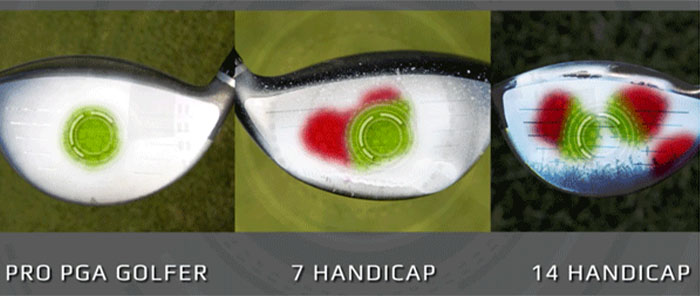

What does that tell you?! The better players hit it in the sweet spot more consistently.
Also, check out this video… I really like this guy, he’s got a lot of good tips in general, but definitely this one’s good on hitting the center of the clubface:
Golf Driving Tips – Increasing Driver Accuracy
Don’t swing so hard!!
Never should you try to swing harder than you can control your swing tempo.
The harder you try to swing, the more out of sync you could get, losing control of the club face, and ultimately hitting a worse shot than if you were to simply swing slower and with an even tempo.
Sure, you might catch one perfectly every now and then, but that’s not the norm. Just accept it, and swing slower. You can work your way back up over time as you learn to control the face better and better.
When I say “control the face”, I’m talking about hitting the ball in the sweet spot of the clubface, AND the open/closed-ness of the face (controlling the shot shape – draw/fade.. Or hook/slice).
Play the right ball
Swing speed, along with the proper ball compression, goes a long way to give you the maximum distance.
If you have slower swing speeds, and you use a harder compression golf ball, you’re not going to get the best results in distance compared to a lower compression ball.
Most seniors should not be using Titleist Pro V1’s. These balls have a high compression rating, around 90 or above, and if you don’t have a swing speed to match then you’re not going to get much distance.
If you swing a bit faster, then you’ll want to play with a high swing speed ball.
Typically you want to either match your swing speed to the compression rating, or have a lesser compression rating than your swing speed.
I have a 97 mph swing speed with my driver and prefer to use the Callaway ERC Triple Track ball, which has a compression rating of about 60. I feel this is a good match for me (keep in mind that I’m also hitting the ball with my irons, which I’m naturally going to have a slower swing speed).


Develop a stock shot shape
Regardless of which one you should choose, the fade or the draw, every golfer should have what is called, “a go to shot”. You don’t really want to be trying to hit it straight. It’s too hard to hit it straight consistently.
So as you are learning and progressing through the ranks of golf, learn to be able to shape your golf shots… from hard hook or slice, to the baby draw or baby fade.
If you’re one who struggles with a slice, check out our write up on the best driver for slice, or simply how to fix a slice.
You’ll find yourself during your career playing golf in all kinds of trouble you may not want to be in, and you’ll need to know how to get out in the least number of shots.
As we get older, the baby fade becomes easier to hit, simply because our bodies can no longer get that full turn in the backswing, but regardless, the ability to hit other shot shapes is important to learn and practice.
Eliminate one side of the course
As you start to progress your golf skills (usually around the time you learn how to consistently break 90), you’ll find the need to eliminate one side of the golf course due to penalty areas, out of bounds, bunkers, or even tree lined roughs where you just may not have any type of shot to get the ball back in play.
This goes hand in hand with shot shaping. That’s HOW you eliminate one side of the course.
Being able to do this efficiently will save you strokes throughout your game. However, some of the time, you might find yourself having to eliminate both sides of the particular fairway you’re playing, forcing you to hit straight shots.
These types of golf holes are the most difficult and require the most patience. If you find yourself on this type of golf hole, take your time and deliberately plan each golf shot.
Learn the Basics: Golf 101 for Beginners
The last two sections are a bit more advanced. If you’re just starting out and want to learn the basics, check out our article on golf tips for beginners.
Alignment on the tee
Not only for just our drives, but for every shot, we need to make sure of our alignment down the target line we choose.
On the range, this can be done using another club or alignment sticks. However, on the course, it’s actually against the rules to use any type of alignment device in assistance to your shot.
So the best way to become aligned to our intended target is to stand a ways behind the golf ball, and use your driver, or any other club, as an aiming tool.
While standing behind the golf ball, I like to use whatever club I intend to hit, hold the grip end about waist high or so, raise the club head, and sight down the line towards my intended target created by the club shaft and ball.
Then I try to find a reference point on this line just slightly in front of the ball. It could be a leaf, a divot, a weird colored piece of grass… anything.
This gives me a good reference point in which to take my parallel stance as well as squaring the clubhead to the target line. Whether you use this method or have your own, set this practice as part of every pre-shot routine.
Drills to Hit Your Driver Better
Foot spray drill (or impact tape)
So how do you hit the driver sweet spot?
One of the best ways to tell if you’re hitting the driver sweet spot, or any other club for that matter, is to spray the face with athlete’s foot powder (or any other powder spray will suffice), then hit the ball.
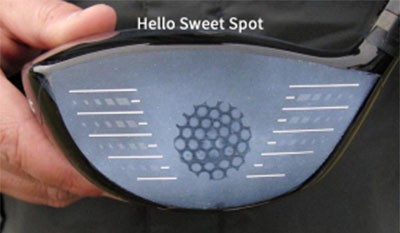

This will show you EXACTLY where the ball makes contact with the club.
If you prefer, impact tape is pretty inexpensive as well, and it basically does the exact same thing. You can get pretty big packs of them on Amazon for pretty cheap.
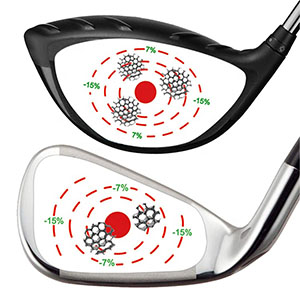

Do this at the range, figure out where you’re consistently miss hitting on the club face, and then work to fix it.
This is one of the BEST drills you can possibly do to get better, especially with the driver!
If finding the center of the club face is something you really struggle with, even after working on the drill, consider getting a more forgiving driver. This basically means that it has a larger sweet spot built into the face and usually the latest and greatest technology. It really can help. We have a list of the most forgiving drivers in this article.
Long and low backswing with a tee drill
Another drill, which I was taught to use at a young age, is to put a long tee in the ground about 3 feet or so behind the ball in the swing arc plane.
The purpose of this drill is to make sure your takeaway is a long and low arc to the top of the backswing.
The object is to clip the top of the tee that was placed behind the ball (it will force you to keep the club low for longer during your backswing).
This drill should be done at a greatly reduced speed to get a correct golf swing pattern.
Bonus – You can do this same thing with a golf tee where the ball position should be, making sure you clip the top of the tee on the way through impact to the finish. Combine this with the backswing drill to work on the full swing.
Half swing slow impact drill
Another simple drill for hitting the driver better is to tee up a ball, get in your proper address position, and take a short, maybe one quarter to three quarter takeaway, and swing through slowly to impact.
Really concentrate on making sure you’re hitting UP on the ball, and carry this to the finish of the swing. Don’t try to hit monster drives. This is strictly a slow-motion drill.
Swing training aid practice – improving rhythm, flexibility, balance, tempo, and strength
A final drill I like is to use a swing weight ring, like the Orange Whip, and practice your swing arc. These types of tools will help you to build swing speed, as well as the correct rhythm to transfer/shift your weight from the back to front throughout the swing.
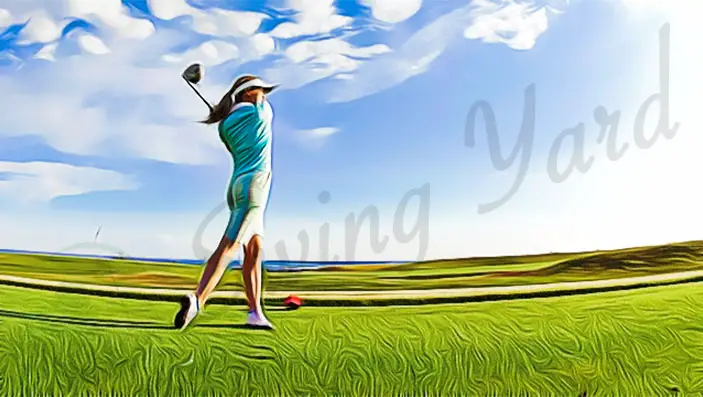

How to Hit a Driver – Final Thoughts
Don’t let the fear of pulling out the driver on the tee box be a frustration that keeps you away from this great game any longer!
You have the information on HOW to hit a driver. Now if you practice the things I’ve talked about in this article, you’ll be impressing your friends with long, straight, accurate drives in no time, trust me.
Remember, we had the set up changes of teeing it high, widening the stance, moving the ball forward, shifting your weight back, and tilting your shoulders back.
I also talked about hitting it further by adjusting the loft, hitting UP on the ball, increasing your swing speed, and learning to hit it in the sweet spot on the club face.
We talked about increasing your driver accuracy by not swinging too hard, playing the right compression ball, developing a stock shot (not trying to hit it straight), eliminating one side of the course on certain holes, and practicing and being precise with your alignment.
I gave you several drills to work on at your home range as well.
Now go out there, start practicing, and finally gain the confidence in the driver you’ve always wanted. It really will make this game so much more fun! Good luck, cheers!
Best Golf Driver Reviews
If you’re in the market for a new driver, I highly suggest you check out our massive review and ultimate guide for selecting the best golf driver for you and your swing.
I spent several days actually hitting and testing all of the newest and top drivers available to date… along with an extensive write up, pros/cons, and my personal professional opinion on each one, and why it may (or may not) be the best driver for you.
The ultimate guide goes into detail on all the aspects you should be considering when buying a new driver, and there are a lot of them.
FAQ – How to Hit a Driver
Why can’t I hit a driver?
You can’t hit a driver because it’s the hardest club to hit consistently. You’re not alone. Use the techniques in this article and keep practicing, and you’ll eventually figure it out and make it one of your best clubs in the bag.
Why is the driver so hard to hit?
The driver is so hard to hit because:
- It’s the longest club – longer equals harder (imagine trying to swing a club that’s 10ft long!)
- Hitting up on the ball isn’t what you’re used to
- Flatter swing arc
- Least lofted club – less room for error when squaring the club face
- Furthest distance club – much more time for a small error in ball flight to end up in trouble
What do you do when you can’t hit your driver?
If you just can’t hit your driver well, even after you’ve incorporated these lessons, remove the driver from the bag and add another fairway wood, hybrid, or even a wedge.
Why do I hit my 3 wood as far as my driver?
You’re hitting your 3 wood just as far as your driver because it’s just simply an easier club to hit, resulting in making more solid contact in the sweet spot of the face. The 3 wood is easier because it’s not as long and has less loft.
How do you hit a driver straight every time?
You actually can’t really hit a driver straight every time. This is a common misconception. Even the Pro’s can’t hit their driver straight all the time. This is why most golfers develop a stock shot… either a draw or fade. It’s a lot easier to hit the fairway if you know which way you’re going to curve the shot vs if you don’t.
If you really want to hit straighter shots overall, pick up one of these straight golf balls, and it will certainly help.
Should you choke up on driver?
Yes, you should choke up on the driver. You should actually never try hitting any club by holding the grip at the very end. This doesn’t let you have full control. Every Professional on tour, men and women alike, choke up the grip at least an inch.
Choking up on the driver allows for a better grip and better control of the club. If you find you’re struggling with control, you should give it a try. Remember, the main reason the driver is so hard to hit is because it’s so long… might as well choke up an extra inch or two if you’re having trouble.
Why am I hitting the ground first with my driver?
You’re hitting the ground first with your driver because of the way you’re trying to swing and make an impact with your driver. The driver is designed to be moving UP at impact, not down. If you’re hitting the ground before the ball, you’re trying to swing the driver like an iron, which is incorrect.
Move the ball up in the stance to the lead heel or big toe, tee it high where the equator of the ball is equal to or higher than the top edge of the driver, and at address tilt your shoulders so that the lead side is higher than the trail side.
Finally, choose a spot on the back of the ball and concentrate your vision there, instead of on top. Also, transfer your weight slightly to the trail foot at address. If you do all of these, you’ll eliminate trying to hit down on the ball and will force yourself to be in the upward part of the golf swing at impact.
How can I increase my driving distance?
- “Tee the ball high, so it flies”
- Raise the loft on your driver
- Hit it in the sweet spot – use drills and impact tape along with lots of practice
- Work on increasing swing speed by using one of many training aids on the market, and increasing your strength and suppleness of your core muscles
How do you hit a driver solid every time?
To get a solid hit with the driver every time, you MUST work on controlling the impact position on the face. Try using impact tape or foot spray on the face while at the range to determine where you’re making impact. Adjust your swing accordingly, and work to gain more consistency.
If you’re like most people, your biggest problem is probably with hitting slices. If thats the case, head over to my article specifically written about how to stop slicing a driver.


